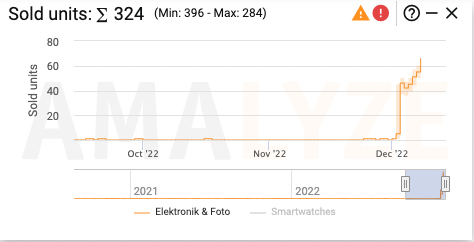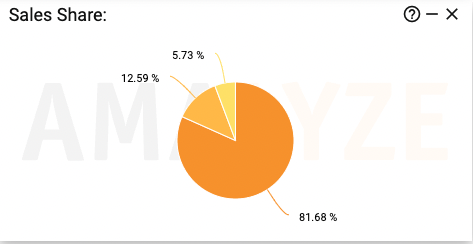Best Sellers Rank

In general, the Best Sellers Rank is an indicator how well the product sells. The better it sells, the lower its Best Sellers Rank will be. The Best Sellers Rank is calculated by Amazon on a regular base and updated hourly. Amazon calculated the Best Sellers Rank for the most categories the product is in (main category and subcategories)
While the Amazon Best Sellers list is a good indicator of how well a product is selling overall, it doesn’t always indicate how well an item is selling in relation to similar items. Amazon created category and subcategory best seller lists to highlight an item’s rank in the categories or subcategories where it really stands out.
Amazon chooses a few of the most popular subcategories in which the item has a high ranking in relation to other items in that subcategory and showcases the item’s rank on the product page. As with the main Amazon Best Sellers list, these category rankings are based on Amazon sales, and are updated hourly.
Sold Units

The Sold Units are an extrapolation for the individual day, based on key figures available to us.
We use AI models, which are recalculated and trained for each day, category and marketplace based on the data available to us.
The results of these AI models currently give a hit accuracy of 83% – 98% compared to the verification data. In concrete terms, this means that between 88% and 98% of the forecasts are 100% consistent with the verification data or that there are deviations between the forecasts and the verification data in just 2% – 13%.
In many other tools, the TOP Seller of a category always has the same number of sales.
Thanks to our methodology, we are able to take seasonal fluctuations into account that change the basic level of a category, or current trends such as Father’s Day or the launch of new Apple models and the associated sales.
Sales Share

Our tool “Sales Share” helps you to quickly see which variation sells the most. You can compare not only variants, but also two completely different products. The sales share is determined based on the visibility of the respective variations and can not be compared directly with, for example, the sales data from the extension. So, there may be discrepancies, but they can be explained as follows:
Although a product has a very high visibility, it may be that the customers on the product detail page then decide for a different variant. Not always is the most sold variant also used by Amazon to be displayed in the search results. However, experience shows that the most frequently sold variant is also the one that is displayed in the search results over time. However, the update can take several weeks.
As the visibility is calculated – among other things – taking the search volume, the current ranking position, the type of search results (tile vs. list view) into account, the visibility is permanently updated and always refers to a specific date. This is individual for each keyword for which the ASIN was found. This can lead to deviations when comparing the sales share with other resources within a specific period.
For the sales share by visibility, only the organic positions are used for the calculation of the visibility. In this respect, as sales, which result via e.g., from sponsored products within the search results or other links on Amazon (e.g., on the product detail page), are not considered here. The share of sales by visibility only considers sales that result from a click on an organic search result. Likewise, sales, which are generated, for example, through newsletters, external traffic, etc., are not considered.
